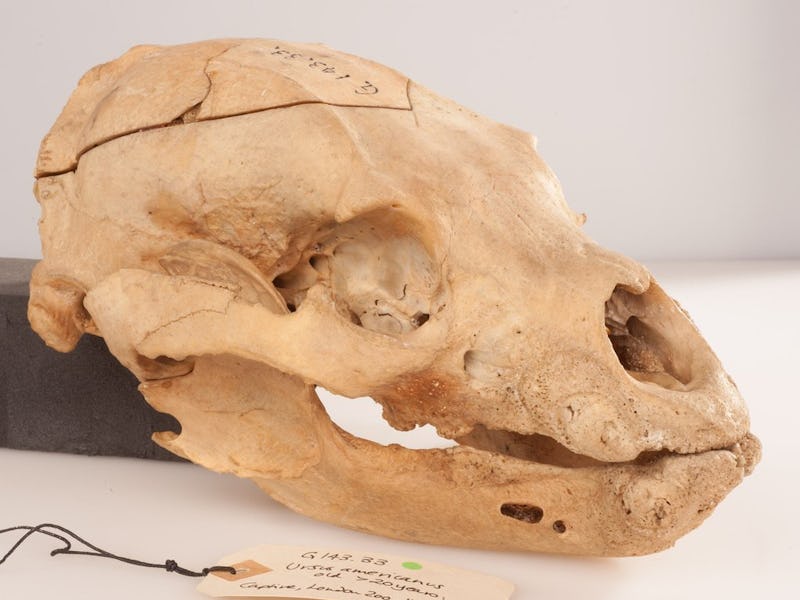Looking at the Real Winnie-the-Pooh
Turns out the real bear had some real dental problems.

Fans of Winnie-the-Pooh can get an in-person look at the skull of the bear that first inspired the character.
The Royal College of Surgeons’ Hunterian Museum in London is currently displaying the skull of Winnipeg (“Winnie” for short), a female Canadian black bear that lived at the London Zoo back when Pooh creator A.A. Milne and his son Christopher were regular visitors.
Sam Alberti, Director of Museums and Archives at the Royal College of Surgeons, points out via the Royal College’s website when discussing Winnipeg:
“Her (Winnie’s) story and presence in our collection are a reminder of how learning about animal health can enhance our understanding and care for species around the world.”
Left at the London Zoo in 1914 by her then-owner (Captain Harry Colebourn from Manitoba, Canada), the original Winnie was brought to Europe during World War I as a mascot. She remained an attraction at the zoo until her death of old age in 1934.
RCS documents show Winnie’s skull was donated to a Sir James Frank Colyer, then the curator of the Odontological Museum, which was part of the RCS collections. A dental surgeon, he compiled an early, comprehensive book on dental disease in animals (Colyer 1936. Variations and diseases of the teeth of animals). According to Colyer, Winnie suffered from oral ailments such as periodontitis and the loss of teeth—age-related circumstances. However—as her skull was an early part of Colyer’s research—Winnie is remembered by the RCS as not just an inspiration for a beloved children’s book character and Disney star, but as an important research specimen as well.